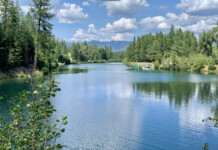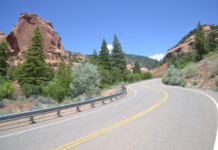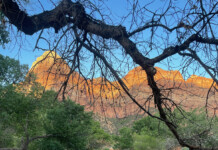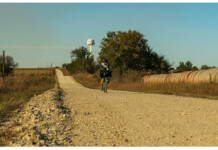The Carquinez Strait Loop – a mild play on words – is a fun northern California ride that crosses two bridges in the northern Bay Area. The clockwise loop is 22.9 miles in length. Do not be fooled by the apparently short(!) distance. The highest elevation reached is 250 feet above sea level, and the lowest is just four feet, but there is just over 1,200 feet of climbing in between. Some of the climbs are short, steep spurts. The featured segments of the ride include two bridge crossings, and an optional half-mile of off-road. One of the bridge crossings is not for the squeamish, as the experience can be unsettling to riders with acrophobia.
Ready for the challenge? Note that the route details may seem complex, but the objective is simple; that is, ride as close to the shoreline as possible on one side of Carquinez Strait, cross a bridge, then, ride near the shoreline on the other side of the Strait, cross a second bridge, and then ride near the shoreline to complete the loop. There are no roads along the shorelines, though, so the route uses inland options. Start the ride at Radke Martinez Regional Shoreline, located on the northern edge of the city of Martinez. Martinez is located 35 miles to the northeast of San Francisco, in California’s Bay Area. To get there from San Francisco, take the I-80 freeway to the East Bay, crossing the Bay Bridge. Stay on I-80 as it turns to head north. After passing through several cities, exit to State Highway 4 (CA 4) and head east. Exit at Alhambra Avenue, turn left, and head north toward Martinez’ waterfront. Enter the shoreline park from Ferry Street. Turn right on Joe DiMaggio Drive, followed by a left on Court Street. Park in the lot off of Court, on the left. Legendary pro baseballer Joe DiMaggio was born in Martinez (1914), hence the street name. Martinez had an estimated population of 38,400 in 2018. The city is the seat of Contra Costa County; the majority of the employed population works for the county government.
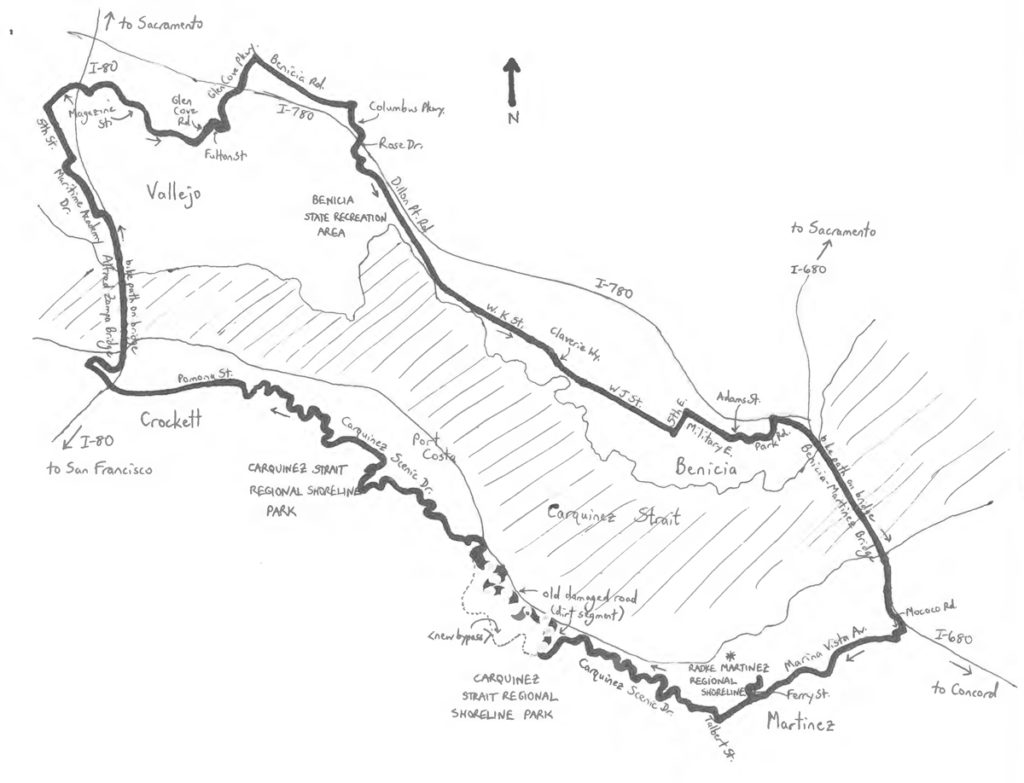
From the lot, exit the park by heading north on Court, which curves to the right to become Joe DiMaggio. Next, turn left on Ferry Street to cross the railroad tracks (note that the park is separated from the city by the tracks). Turn right at Marina Vista Avenue – behind you is the city’s compact commercial district, which is worth a visit. Next, turn right at Talbert Street. At Foster Street, hang an easy left onto Carquinez Scenic Drive, and tackle the ride’s first climb (8.7% grade, just over one-tenth of a mile). From here, Carquinez Scenic Drive twists and winds through Carquinez Strait Regional Shoreline and private lands, with the Strait to your right, and bluffs to your left. When I rode this, the scenic drive was lightly-used by motor vehicles, as a 1.9-mile portion of it had been closed since a 1983 mudslide took out part of the road. That segment had always been passable to hikers and bikers on a narrow dirt segment, though. As of this writing, construction was in progress on a paved bypass of the damaged segment. True die-hards might continue to use the old dirt segment, however, to sustain a 35-year tradition. After snaking and rolling along Carquinez Scenic Drive to the 2.5-mile mark, with a number of short climbs and descents (average 4.5% grade), the road enters a hairpin curve. The new bypass starts here – stay to the right for the old, damaged road. The dirt segment is only about one-half mile in length, narrowing to single-track for a stretch. The damaged road, now back on rough pavement, continues to mile 4.3. Beyond the barriers, “normal” riding resumes (the barriers might remain once the bypass is complete). From here, the road climbs to the highest elevation of the entire ride, at 250 feet above sea level. A quick descent follows, including an awkward crossing of Reservoir Street; use caution here, as the sight distance is poor. At mile 5.7, the road curves to the left; the community to the right is Bull Valley, part of the small settlement of Port Costa (population 200). The town was, at one time, the nation’s busiest wheat port.
Carquinez Scenic Drive continues to wind and twist its way across the valley. Note that, intermittently along the road, there are trailheads, all of which are worth exploring. At mile 7.55, after a 90o bend, the road enters the community of Crockett, becoming Pomona Street. Crockett had a population of 3,100 in 2010 and is, perhaps, still reeling from a longtime association with C&H Sugar. The company at one time employed about 95% of the town’s residents, but business began to decline in the 1960s. The local refinery finally shut down in 2017. The ride through Crockett is a straight shot on Pomona Street, first on a gradual descent, and then a gradual climb, through the small commercial district. After just one mile, the street passes under the massive I-80 freeway structure. One-quarter mile later, at the intersection with the freeway ramps, move right onto the walkway, after crossing the intersection. Turn right and ride along the walkway, which, after curving to the left, adjacent the ramps, continues onto the Carquinez Strait Bridge. The bridge consists of two spans, one for northbound and one for southbound traffic (although the official orientations are eastbound and westbound). The bike path uses the westbound span, which is the Alfred Zampa Memorial Bridge, where motor vehicles will be moving in the opposing direction, separated by a barrier. Prior to the Zampa span’s completion in 2003, it was not possible to bicycle across the bridge(!). OK, I was a little uncomfortable on this crossing, perhaps because the railing to the left is open, with a clear view of the water, which is 156 feet below. The path’s surface is opaque, though.
Touchdown comes after 1.05 miles – you are now in the city of Vallejo, in Solano County, 10.9 miles into the ride. Vallejo had an estimated population of 121,900 in 2018, and is associated with the California Maritime Academy, Six Flags Discovery Kingdom (formerly Marine World-Africa USA), and Mare Island Naval Shipyard (decommissioned in 1996). Stay on the path as it parallels I-80, and then veers away, abruptly depositing you onto Maritime Academy Drive, adjacent the Academy. From here, the fact that Vallejo is Solano County’s largest city is evident in the busier streets. The next four miles of the ride cross the city. Maritime Academy curves to the right; cross busy CA 29 at the traffic signal, and then turn left onto 5th Street. At the end of the 5th, turn right onto Magazine Street. Magazine crosses over I-80. At Lincoln Street, bear left to remain on Magazine. After a little over one mile, Magazine makes a hard left, becoming Glen Cove Road. Next, turn right onto Fulton Drive, then left on New Bedford Drive, and then another left onto Glen Cove Parkway. Glen Cove crosses over I-780; next, turn right onto Benicia Road. This awkward segment is downhill (3.7% grade); control your speed, because there is a retail center on the right, with plenty of turning vehicles. Ride safely along this 0.9-mile segment. At the end of Benicia, turn right onto Columbus Parkway, followed by a right turn onto Rose Drive. Rose crosses over I-780, and then becomes a freeway ramp – whoa; rather than riding onto the freeway, turn right onto the connector road.
At the end of the short connector, now at mile 13.1, turn left onto Dillon Point Road and enter the Benicia State Recreation Area. The passage through this park is pleasant, with few motor vehicles. After riding through a large parking lot, leave the park and enter the city of Benicia (now at mile 14.0). Turn right onto West K Street. West K climbs very gradually past Benicia residences. Bear right onto Claverie Way, and then turn left onto West J Street, to continue crossing the city. Benicia had an estimated population of 28,300 in 2018, and is best known as a former California State capital (for just one year, from 1853 to 1854). The city’s historical sites and commercial district are worth visiting. Turn left at 5th Street, followed by a right onto Military East. Adjacent the old Benicia Arsenal – another historical site worth visiting – Military splits into three roads. Take the middle road, which is Adams Street, passing through a corner of the Arsenal. Turn left at Park Road, and climb the steepest hill of the entire ride (10.2% grade). The climb is short. Keep straight to the I-780 freeway. Underneath the structure, turn right onto the bike path (mile 19.35). The path runs underneath the freeway for a stretch, and then crosses a ramp – keep straight, and then curve right onto the Benicia-Martinez Bridge. The path is notably more comfortable than that on the Carquinez Strait Bridge, given the height and secure feeling of the barriers and railings. The bridge was built in 1962, and was critical in making Benicia more accessible. The ride across is a net downhill; in fact, the touchdown point is at the lowest elevation of the ride, at just four feet (at mile 21.3). Turn right onto Mococo Street. After a short segment, turn left to cross the railroad tracks, followed by a right onto Marina Vista Avenue. Shell Oil has a very large refinery along this stretch, as evidenced by all of the tanks, and heavy industrial feel. (The refinery may have transferred ownership by the publication of this). Continue on Marina Vista as it makes a couple of turns, and then enters central Martinez. Continue to Ferry Street; turn right to cross the railroad tracks, returning to Radke Martinez Regional Shoreline. Continue to the parking lot to conclude the ride.
Starting & ending point coordinates: 38.019875oN 122.137297oW
For more Utah rides, see Road Biking Utah (Falcon Guides), written by avid cyclist Wayne Cottrell. Road Biking Utah features descriptions of 40 road bike rides in Utah. The ride lengths range from 14 to 106 miles, and the book’s coverage is statewide: from Wendover to Vernal, and from Bear Lake to St. George to Bluff. Each ride description features information about the suggested start-finish location, length, mileposts, terrain, traffic conditions and, most importantly, sights. The text is rich in detail about each route, including history, folklore, flora, fauna and, of course, scenery.
Wayne Cottrell is a former Utah resident who conducted extensive research while living here – and even after moving – to develop the content for the book.

